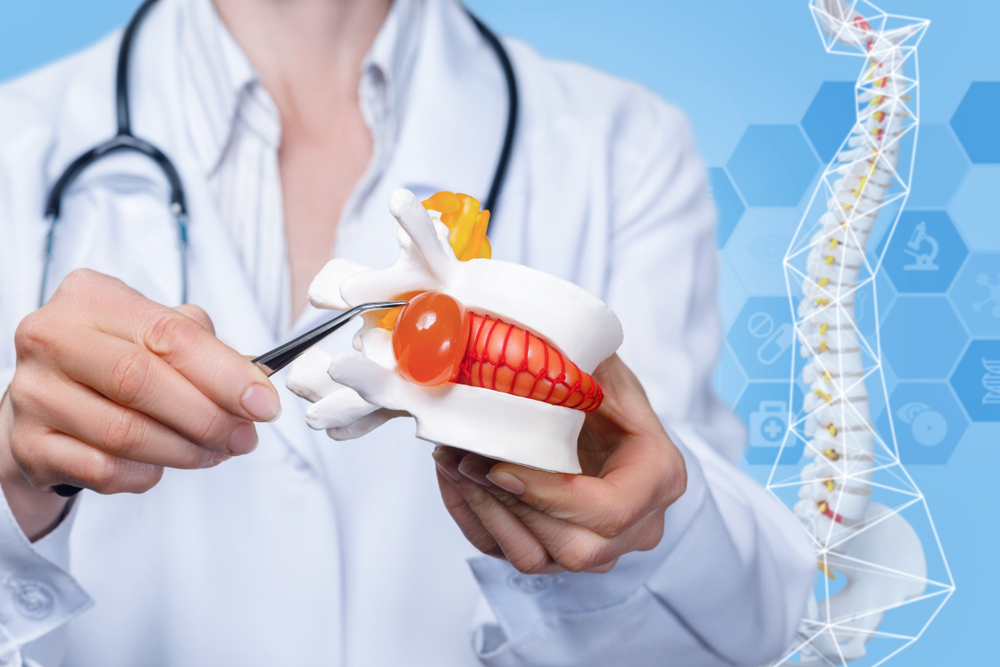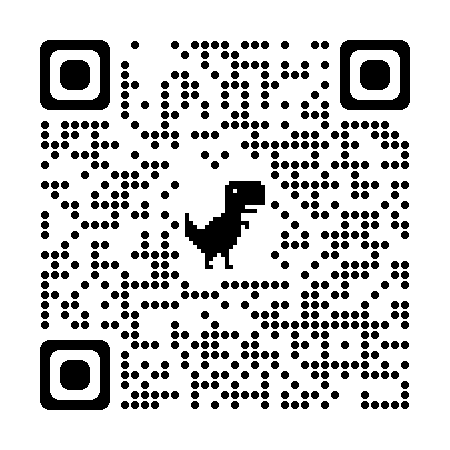If you’ve been struggling with a herniated disc, you know how it can impact your daily life. But don’t worry; non-surgical disc treatment offers a path to relief without the need for invasive procedures or medications. At the Illinois Back Institute, we specialize in advanced, non-surgical therapies designed to alleviate your back pain and restore your quality of life.
Here’s a quick look at some non-surgical disc treatment options:
- Functional Disc Stabilization™: A non-invasive, non-surgical, and drug-free treatment that reverses disc degeneration.
- Physical Therapy: Targeted exercises and stretches to strengthen your back.
- Conservative Therapy: Rest, anti-inflammatory medications, and lifestyle adjustments.
- Chiropractic Care: Manual adjustments to relieve pressure on the spine.
- Acupuncture: Traditional therapy for pain relief and increased circulation.
At Illinois Back Institute, we’ve helped tens of thousands of patients recover from back pain with these effective treatments. Instead of turning to drugs or surgery, consider these proven methods to heal and strengthen your back.
Understanding Herniated Discs
A herniated disc can disrupt your life. But understanding its causes, symptoms, and diagnosis can help you find the right treatment.
Causes of Herniated Discs
Herniated discs often result from aging. As we get older, our spinal discs lose water content, making them less flexible and more prone to tearing.
Injury is another cause. Lifting heavy objects incorrectly, twisting suddenly, or even a fall can cause a disc to herniate. Everyday activities, like sneezing or bending, can also trigger it if the disc is already weakened.
Risk Factors:
- Age: Older adults are more susceptible.
- Weight: Extra body weight adds stress to the discs.
- Occupation: Jobs that require heavy lifting or repetitive motion.
- Smoking: Reduces oxygen supply to the disc, causing it to degenerate more quickly.
Symptoms of Herniated Discs
Symptoms vary but often include:
- Pain: In the back, neck, or limbs, depending on the affected area.
- Numbness and Tingling: Especially in the arms or legs.
- Weakness: Muscles served by affected nerves may weaken, causing you to stumble or have trouble lifting or holding items.
Diagnosing Herniated Discs
Diagnosing a herniated disc starts with a physical exam. Your doctor will check muscle strength, reflexes, and your ability to walk or feel light touches.
Imaging Tests:
- MRI: Provides detailed images of the spine and can show the location of the herniated disc.
- CT Scan: Combines X-ray images to give a comprehensive view of the spine.
- X-rays: Used to rule out other causes like spinal malalignment.
- Myelogram: Involves injecting dye into spinal fluid before taking X-rays to highlight pressure on the spinal cord and nerves.
Check out the before and after image below to see Allen’s imaging results after receiving 50 treatments from Illinois Back Pain. Without surgery or medications!!
Understanding these basics can help you recognize the signs and seek early treatment. Early diagnosis and non-surgical disc treatment options can prevent further complications and lead to a quicker recovery. At Illinois Back Institute, we offer Functional Disc Stabilization™, a non-invasive, non-surgical, and drug-free back pain treatment that has proven success with tens of thousands of patients. This back pain treatment simply reverses disc degeneration, giving you a healthier, stronger back without medications, surgery, or painful injections. Learn more about our surgery-free treatment.
Non-Surgical Disc Treatment Options
Non-surgical disc treatment can help you get back to normal life without the need for surgery. Here are the main options:
Conservative Therapy
Rest and Avoiding Strenuous Activities: Taking it easy for a few days can help reduce inflammation and pain. Avoid heavy lifting, twisting, and other activities that can strain your back.
Pain Medication and Anti-Inflammatory Medication: Over-the-counter NSAIDs like ibuprofen can reduce pain and inflammation. In severe cases, your doctor might prescribe stronger painkillers or muscle relaxants.
Heat or Cold Therapy: Start with cold packs to reduce inflammation, then switch to heat packs to relax muscles and improve blood flow.
Limited Bed Rest: Too much bed rest can make things worse. Rest for short periods and then take a light walk or do gentle activities.
Physical Therapy
Exercises and Stretches: A physical therapist can teach you exercises to strengthen your back and relieve pressure on the affected disc. Core strengthening is crucial.
Deep Tissue Massage: This can help relax tense muscles and improve blood flow, providing short-term relief.
Traction Therapy: This involves stretching the spine to relieve pressure on the discs. It’s a non-invasive way to ease pain.
Transcutaneous Electrical Nerve Stimulation (TENS): TENS uses electrical currents to reduce pain and improve muscle function.
Medications
NSAIDs and Acetaminophen: These over-the-counter meds can help manage pain and reduce inflammation.
Muscle Relaxants: If muscle spasms are part of the problem, muscle relaxants can help. Be aware they can cause drowsiness.
Corticosteroids: These are strong anti-inflammatory drugs that can be taken orally or injected. They help reduce swelling and pain but have side effects if used long-term.
Injections
Epidural Steroid Injections: These injections deliver steroids directly to the area around the spinal nerves, providing long-term relief from pain.
Selective Nerve Root Block: This injection targets specific nerves to block pain signals.
Ozone Injections: Ozone gas is injected into the disc to reduce inflammation and promote healing.
For those looking for a non-invasive, non-surgical, and drug-free treatment, the Illinois Back Institute offers Functional Disc Stabilization™. This treatment has helped tens of thousands of patients by reversing disc degeneration and strengthening the back, all without medications, surgery, or painful injections. Learn more here.
Alternative Therapies
Acupuncture
Acupuncture is an ancient Chinese therapy that involves inserting thin needles into specific points on the body. These points, known as acupuncture points, are believed to influence the flow of energy, or “Qi,” through the body. The goal is to restore balance and promote healing.
How It Works: The needles stimulate the body’s natural healing processes. This can increase circulation, reduce inflammation, and release endorphins—your body’s natural painkillers.
Effectiveness: While studies are limited, some research suggests that acupuncture may provide pain relief for conditions like herniated discs. For instance, one study found that acupuncture might help relieve sciatic pain for several weeks.
Chiropractic Manipulation
Chiropractic manipulation focuses on spinal alignment to relieve pressure on the nerves and improve overall function.
How It Works: Chiropractors use controlled force to adjust specific joints, aiming to improve spinal alignment and relieve pressure on the affected disc. This can include spinal manipulation, mobilization, or gentle adjustments.
Benefits: Chiropractic manipulation can help with pain relief, increased mobility, and better nerve function. According to research, this method can be particularly effective for those experiencing nerve pain due to disc issues.
Traditional Asian Medicine
Traditional Asian medicine offers various treatments like Reiki, moxibustion, and herbal remedies to manage pain and promote healing.
Reiki: This Japanese technique involves specific hand placements to channel energy and relieve pain. Although scientific evidence is sparse, some people find it beneficial for pain management.
Moxibustion: This method uses heated needles or glowing sticks made of mugwort (“Moxa”) placed close to specific body points. The heat is thought to stimulate circulation and relieve pain. Studies suggest that moxibustion might be helpful, but more research is needed.
Herbal Treatments: Traditional Asian medicine often uses herbal remedies to reduce inflammation and promote healing. While not extensively studied, some herbs have shown promise in managing symptoms related to herniated discs.
For those looking for a non-invasive, non-surgical, and drug-free treatment, the Illinois Back Institute offers Functional Disc Stabilization™. This treatment has helped tens of thousands of patients by reversing disc degeneration and strengthening the back, all without medications, surgery, or painful injections. Learn more here.
Functional Disc Stabilization™
If you’re looking for a non-invasive, non-surgical, and drug-free solution to your back pain, then Functional Disc Stabilization™ at the Illinois Back Institute might be your answer. This treatment has proven success with tens of thousands of patients and focuses on reversing disc degeneration naturally.
How Does It Work?
Functional Disc Stabilization™ aims to restore your discs to their healthy state. When your discs are healthy, they are flexible and filled with a gel-like substance. Over time, wear and tear can dehydrate these discs, leading to conditions like herniated discs, bulging discs, and even sciatica.
The Treatment Process:
- Compression and Traction Movements: The treatment involves cycles of compression and traction that help replenish the missing fluids in your discs. This process helps to rehydrate the discs naturally.
- Physical Therapy: In conjunction with the compression and traction, physical therapy is used to strengthen and stabilize your spine. This ensures that your back remains healthy and strong.
Why Choose Functional Disc Stabilization™?
Non-Invasive: Unlike surgery, this treatment does not involve any incisions or invasive procedures.
Non-Surgical: Avoid the risks and long recovery times associated with surgical interventions.
Drug-Free: No need for pain medications or injections, which often come with side effects.
Real Success Stories
Dr. Jeff Winternheimer, DC, the founder of Illinois Back Institute, created this treatment after suffering from a back injury himself. He spent years researching and consulting with back pain experts before developing Functional Disc Stabilization™. His personal journey adds a layer of credibility and compassion to the treatment.
One of the most compelling aspects of this treatment is its widespread success. For instance, a study conducted in 2007 with a PAC 10 university researcher validated the effectiveness of this method. The results were astounding, showing significant improvements in patients’ conditions.
Who Can Benefit?
Anyone experiencing chronic back or neck pain can benefit from Functional Disc Stabilization™. This includes:
- Professional athletes
- Children
- Individuals who have undergone back surgery but still experience pain
For more detailed information, you can read testimonials here.
Next up, we’ll dive into some frequently asked questions about non-surgical disc treatment.
Frequently Asked Questions about Non-Surgical Disc Treatment
Can disc be treated without surgery?
Yes, a herniated disc can often be treated without surgery. In fact, conservative therapy is usually the first line of treatment. This includes:
- Rest: Avoid strenuous activities that can worsen the pain.
- Pain Medication: Over-the-counter painkillers like acetaminophen can help manage pain.
- Anti-inflammatory Medication: Non-steroidal anti-inflammatory drugs (NSAIDs) like ibuprofen can reduce inflammation and pain.
Additionally, Physical Therapy plays a significant role. Physical therapists use exercises and stretches to strengthen your back and core muscles. Techniques like deep tissue massage and traction therapy can also help alleviate pain and pressure on the spine.
How do you treat degenerative disc disease without surgery?
Treating degenerative disc disease without surgery involves a combination of medications, physical therapy, and sometimes injections. Here’s a breakdown:
- Medications:
- NSAIDs: Help reduce inflammation and pain.
- Prescription Pain Relievers: Stronger medications for severe pain.
- Muscle Relaxants: Alleviate muscle spasms.
- Corticosteroids: Reduce inflammation and pain, often used when other medications are ineffective.
- Physical Therapy: Strengthening and stabilizing exercises are crucial. Aerobic exercises like swimming and brisk walking increase blood flow to the spine and reduce stiffness.
- Injections:
- Epidural Steroid Injections: These can reduce inflammation and provide pain relief.
- Selective Nerve Root Block: Targets specific nerves to relieve pain.
How long does a herniated disc take to heal without surgery?
A herniated disc can heal in about 12 weeks with non-surgical treatments. However, the exact time frame can vary depending on the severity of the herniation and the treatment methods used.
- Severe Herniations: May take longer to heal and might require more intensive treatments like corticosteroid injections or specialized physical therapy.
- Low-Impact Cardio Exercises: Activities like swimming and cycling can speed up recovery by improving blood circulation and reducing inflammation.
Functional Disc Stabilization™ at the Illinois Back Institute offers a non-invasive, non-surgical, and drug-free solution. This treatment has proven success in reversing disc degeneration and strengthening your back naturally.
For more details, you can learn about Functional Disc Stabilization™ here.
Next up, we’ll explore some alternative therapies that can complement non-surgical disc treatments.
Conclusion
At the Illinois Back Institute, we believe in the power of non-surgical disc treatment to transform lives. Our approach focuses on natural pain relief without the need for medications, surgery, or painful injections.
Functional Disc Stabilization™ is our signature treatment. It’s a non-invasive, non-surgical, and drug-free method that has helped tens of thousands of patients. This treatment works by reversing disc degeneration, giving you a healthier and stronger back.
Our patients’ success stories speak for themselves. Take Anthony Isadore, who came to us with severe sciatica pain. His pain level was a 9 out of 10, but after treatment, he reported ZERO pain. Or Alan I., who found relief from a bulging and herniated disc after spinal surgery left him still in pain. He now wakes up without soreness and can enjoy daily activities with ease.
Choosing the Illinois Back Institute means opting for a treatment that prioritizes your long-term health and mobility. We offer personalized care in our locations in Arlington Heights, Orland Park, and Oakbrook, IL. Our team of physical therapists, doctors, and nurse practitioners work together to provide the best care possible.
We encourage you to explore Functional Disc Stabilization™ and see how it can help you regain control over your life. For more information, visit our service page.
Don’t let back pain hold you back any longer. Reach out to us today and take the first step towards a pain-free life.
Next up, we’ll explore some alternative therapies that can complement non-surgical disc treatments.





